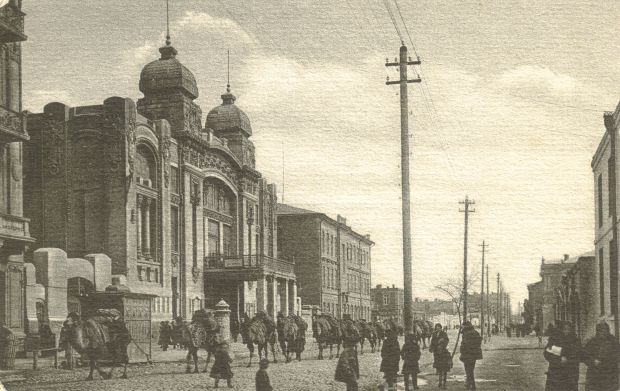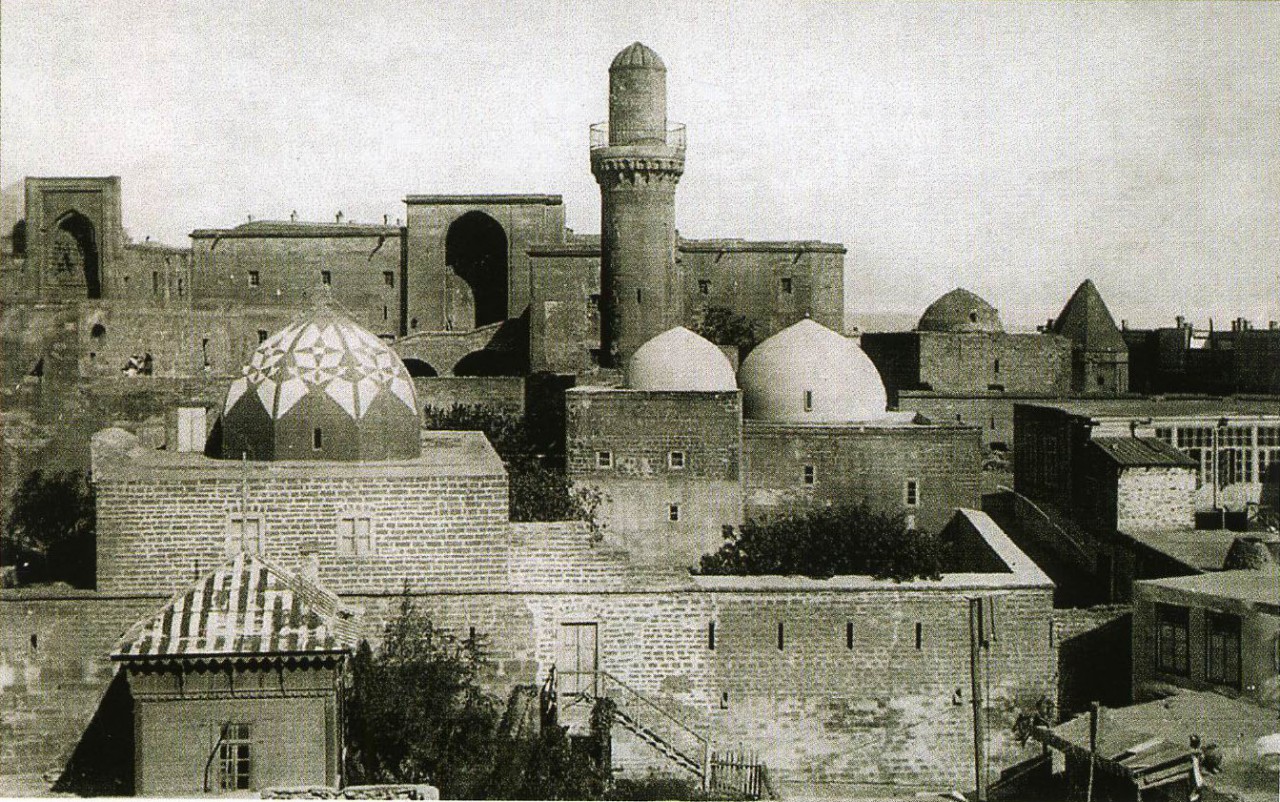The most typical distinguishing features of Azerbaijan's architecture in the 19th century were the expansion of towns, application of Russian town-planning principles and the development of the general layouts of Ganja, Shemakha and Baku.
The construction of advanced buildings, after Northern Azerbaijan was ceded to Russia, had significant importance. New buildings such as theatres, schools, hospitals, and houses were constructed in the middle of the 19th century. The establishment and continuous development of capitalist relations produced a strong impact on the architectural development of Azerbaijan.  The peculiarities of Azerbaijani architecture can easily be found in Baku buildings that were built during the period of oil industry development in the 19th-20th centuries. Baku was becoming one of the largest cities in Russia.
The peculiarities of Azerbaijani architecture can easily be found in Baku buildings that were built during the period of oil industry development in the 19th-20th centuries. Baku was becoming one of the largest cities in Russia.
The architecture of Azerbaijan was developing in two main directions - the house composition principles that played a significant role in the planning of housing structure, and European architectural traditions. Local architects and popular masters created their housing compositions at the base of traditional architectural forms. The representatives of the European Architectural Schools (St. Petersburg Civil Engineering Institute and the Emperor's Academy of Arts) also contributed to the construction of housing in Baku. The national architecture did not have opportunities for revelation, and the market was dominated by European architectural styles and eclecticism. The strengthening of European architectural tendencies in buildings and the unavailability of professional local architects prevented the national architectural styles from developing. This is why any kind of usage of the national style in architecture was very important for the development and propaganda of national architecture. Nevertheless, at that stage, it was only reflecting itself in the construction of religious and cultural-residential houses.
In addition to residential housing, the most typical constructions built in Azerbaijan in the 19th century were trade houses. Such buildings were usually used as trade enterprises and handicraft workshops. Shops in Baku, Ganja, Shusha and Guba are the most vivid examples of such buildings.
Hospitals and small medical enterprises were also built in Azerbaijan during this period. The hospital, built under architect G.Hadjibabayev's project in Salyan in the 1860s, operated until the beginning of the 20th century.
The construction of theatre buildings started in Azerbaijan in the second half of the 19th century. That was a completely new type of architecture in Azerbaijan The first theatre building was constructed in Shamakhi (in 1858, by architect G.Hadjibabayev), followed by the Tagiyev theatre in Baku (currently known as the Azerbaijan State Theater of Musical Comedy, 1883, I.Kongovitski, destroyed at the end of the 1980s ) and Mayilov Theater (currently known as the Azerbaijan State Theater of Opera and Ballet, in 1911, by architect N.G.Bayev, the building burnt down in 1985 and underwent reconstruction from 1986-87).

Large and monumental religious buildings were constructed in the first half of the 19th century.
Local style architecture schools continued with the old traditions in some ways, which appeared in Azerbaijan in this period. The typical external peculiarities of mosque buildings were taught in local architecture schools of Azerbaijan such as Baku-Absheron, Guba-Gusar, Ganja-Nagorny Karabakh, Shaki-Zagatala, Lankaran and Nakhichevan.
The Bey mosque in Baku (Icharishahar, architects Mahammad Haashim al-Bakuvi and Mirali an-Nagi bin Seyyid Huseyn,1895), the Gasim bey mosque (architect Mashadi Mirza Gafar Ismayilov, 1896), the Tazapir mosque (1905-14), the Goy mosque (Blue mosque - 1912-13), the V.Mukhtarov's mosque in Amirdjan (1909, architect of all three mosques is Z.Ahmadbayov) are the most typical buildings standing for capitalism.
European architecture failed to lay down its roots in the Karabakh area, which was known for its long-time held architectural traditions and a variety of national architectural monuments. In Karabakh, it was simply missed among the local styles. Nagorny Karabakh had a special architectural school, of which Karbalayi Safikhan Garabagi was the most well-known representative. Karbala Safikhan, who was loyal to local traditions and principles, restored the Imamzade complex in Barda (1868), the Agdam mosque (1868-70), the Ashagi mosque (1874-75), the Yukari mosque or the Juma mosque in Shusha (1883), the Hadji Alakbar mosque (1890), rural mosques in Horadiz (1891-1908) and Godjahmadli (1906) - currently known as the town of Fuzuli, the Tatar mosque in Odessa (1870s), the Garabaglilar mosque in Ashgabad (1880s), and so on.
The construction of factories, stores, ports, bridges, stations and other structures led to the formation of industrial and transport architecture in Azerbaijan. Two different industrial areas existed in the period of capitalist development. The first was Baku - the industrial centre of Azerbaijan, with large oil plants and suburban industrial areas. The second consisted of manufacturing buildings for silkworm-breeding plants, quarries, cotton cleaning plants, wineries, copper plants in Gadabay and Galakand, as well as copper and cobalt plants in Dashkasan. The connections between these industrial areas improved after the Baku railroad station was built in 1883. The development of various fields of industry led to the evolution of industrial architecture in Azerbaijan.



